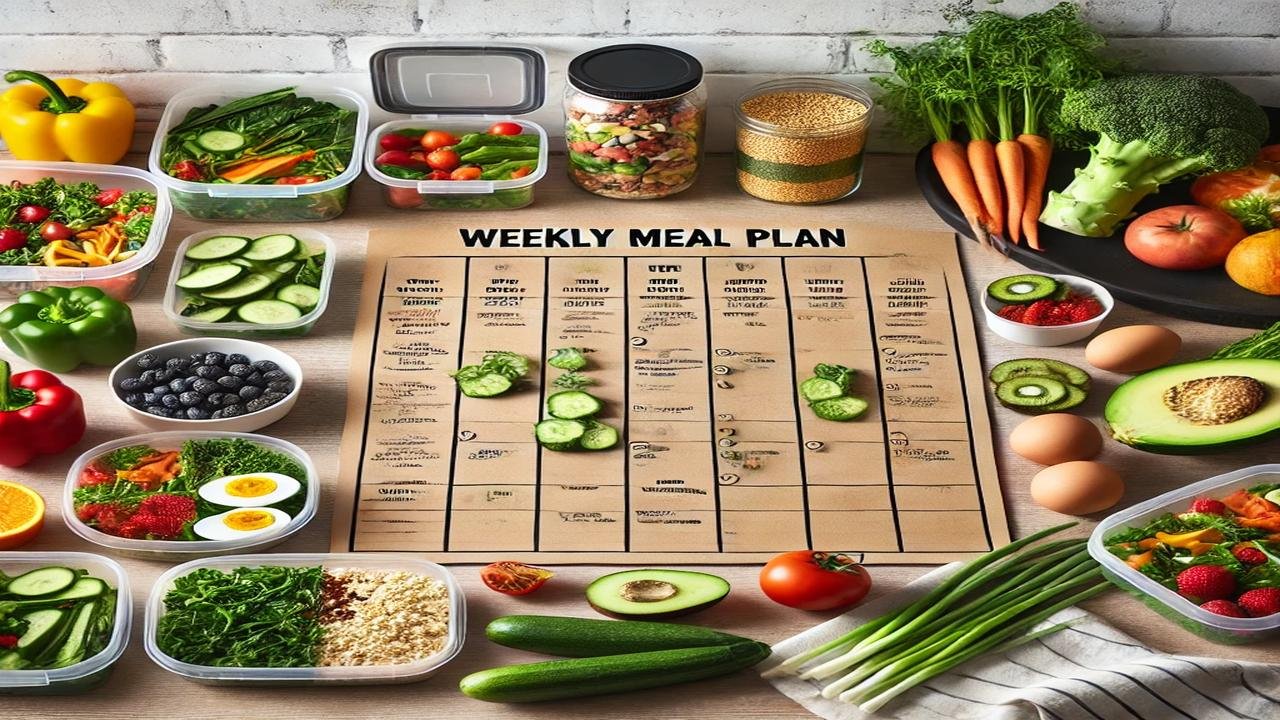12 Blog Post Title: How to Create a Meal Plan That Works for Your Lifestyle

Table of Contents
Introduction
Meal planning is a powerful tool to save time, reduce stress, and achieve your health goals. Whether you’re looking to eat healthier, lose weight, or simply get organized, a well-thought-out meal plan can make a huge difference. In this post, we’ll walk you through how to create a meal plan tailored to your lifestyle and dietary preferences.
1. What Is a Meal Plan?
A meal plan is a pre-determined schedule of meals for a day, week, or even a month. It helps streamline grocery shopping, ensures balanced nutrition, and minimizes food waste.
Key Benefits of Meal Planning:
- Saves time and money.
- Promotes healthier eating habits.
- Reduces decision fatigue.
- Prevents impulse food purchases.
2. Steps to Create a Meal Plan
Here are the essential steps to craft a personalized meal plan:
- Set Your Goals
- Decide what you want to achieve: weight loss, muscle gain, balanced nutrition, or convenience.
- Understand Your Dietary Needs
- Identify specific requirements (e.g., low-carb, vegan, gluten-free, high-protein).
- Choose Your Recipes
- Select recipes that align with your goals and dietary preferences.
- Use online tools or apps to find recipes with balanced macros.
- Create a Weekly Menu
- Plan meals for breakfast, lunch, dinner, and snacks.
- Incorporate variety to avoid monotony.
- Write a Shopping List
- Based on your menu, list all the ingredients you need.
- Group items by grocery sections (e.g., produce, dairy, pantry).
- Prep Ahead
- Dedicate a few hours to chop vegetables, cook proteins, and portion meals.
- Store meals in airtight containers for easy access.
3. Meal Planning Tips for Success
- Keep It Simple
- Start with easy-to-make recipes and a manageable schedule.
- Plan for Leftovers
- Double portions of dinner to serve as lunch the next day.
- Use a Meal Planning App
- Apps like MyFitnessPal, Mealime, or Paprika can simplify planning.
- Stay Flexible
- Life happens! Allow for changes and adjustments.
4. Example Meal Plan for a Week
Here’s a simple, balanced 7-day meal plan for a family of four:
| Day | Breakfast | Lunch | Dinner | Snack |
|---|---|---|---|---|
| Monday | Oatmeal with fruit | Grilled chicken salad | Spaghetti with marinara | Greek yogurt |
| Tuesday | Smoothie with protein powder | Turkey sandwich with salad | Stir-fried veggies & tofu | Apple slices with peanut butter |
| Wednesday | Scrambled eggs with avocado | Quinoa and roasted veggies | Baked salmon with asparagus | Trail mix |
| Thursday | Greek yogurt parfait | Chicken wrap with hummus | Veggie curry with rice | Carrot sticks with hummus |
| Friday | Pancakes with maple syrup | Leftover veggie curry | Grilled steak with sweet potato | Dark chocolate square |
| Saturday | Whole grain toast with eggs | Pasta salad with olives | Pizza night (homemade) | Fresh fruit |
| Sunday | Bagel with cream cheese | Soup and sandwich combo | Roast chicken with veggies | Cheese cubes and crackers |
5. Common Mistakes to Avoid
- Overcomplicating Recipes
- Stick to simple, familiar dishes, especially at the start.
- Failing to Include Snacks
- Plan snacks to prevent overeating later in the day.
- Ignoring Portion Sizes
- Use measuring cups or a food scale to keep portions accurate.
- Skipping Balance
- Ensure each meal includes a mix of protein, carbs, and healthy fats.
6. Tools and Resources for Meal Planning
- Meal Planning Apps: Mealime, Yummly, PlateJoy
- Recipe Sites: AllRecipes, Minimalist Baker, Budget Bytes
- Meal Prep Containers: Airtight glass containers for long-term freshness
- Printable Templates: Downloadable weekly meal planning templates
Conclusion
Meal planning is the key to stress-free, healthy eating. By following these tips, you’ll not only save time and money but also enjoy nutritious, delicious meals tailored to your lifestyle. Start small, stay consistent, and watch how meal planning transforms your daily routine!





